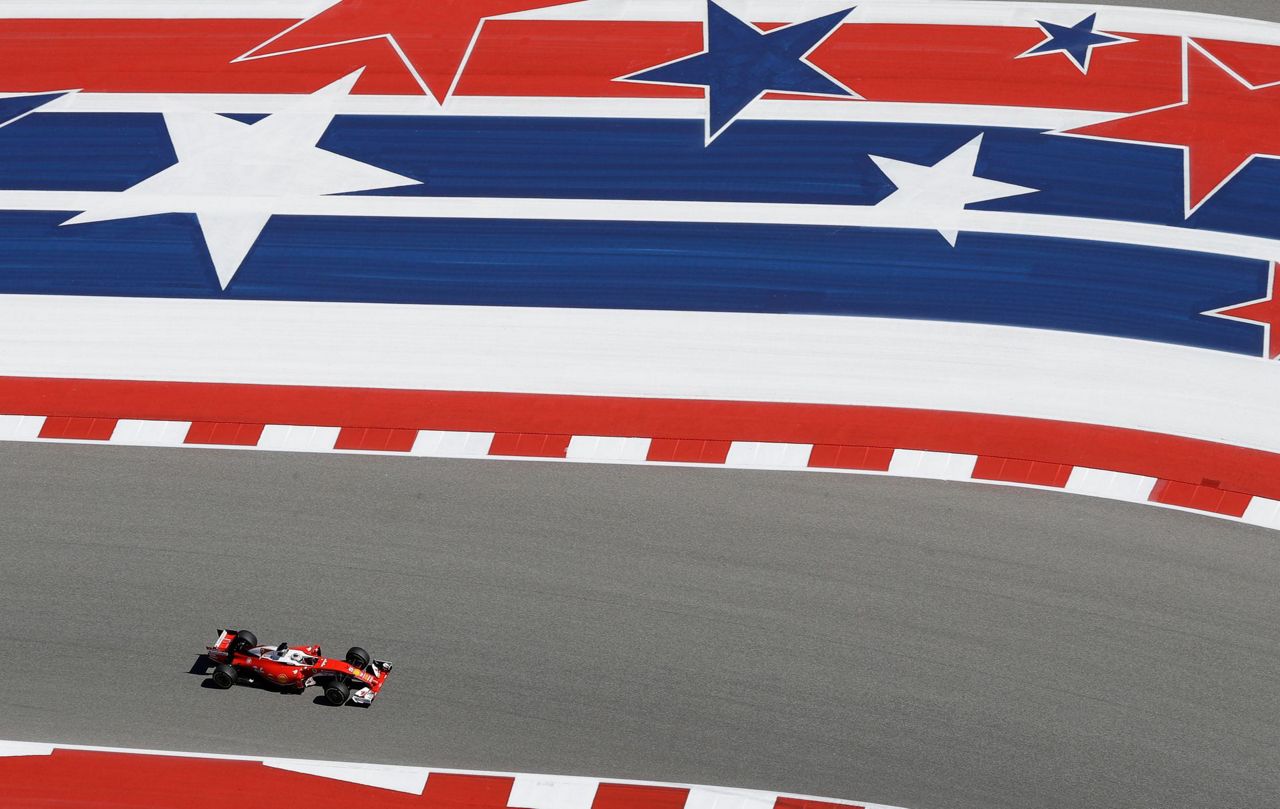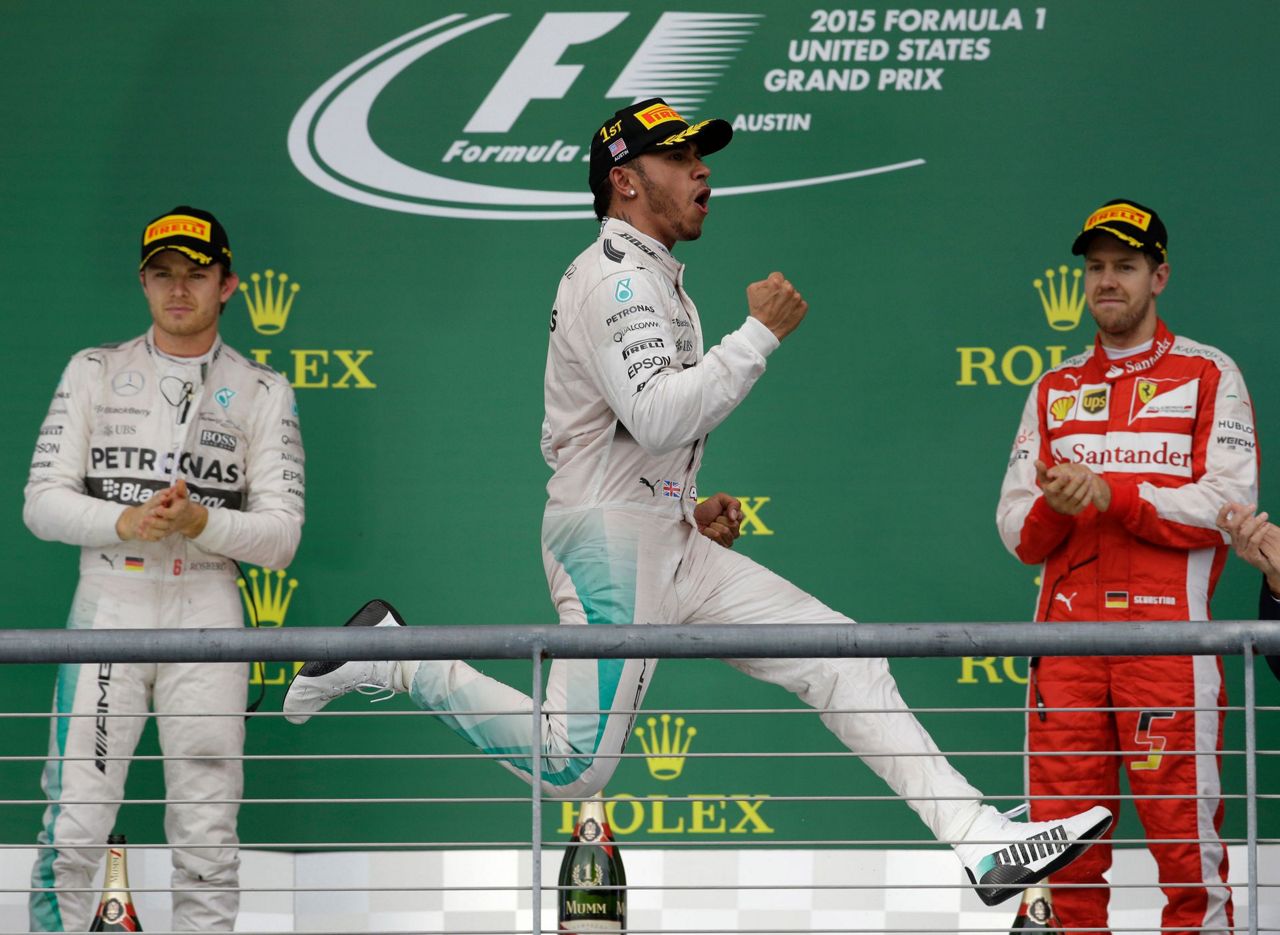AUSTIN, Texas (AP) — The Circuit of the Americas was cut out of the rocky soil just outside of the state capital of Texas.
Getting there requires a drive from Austin's glowing and growing urban core past trailer parks, a landfill, flea markets and miles of rolling hills dotted with goats and horses. But once there, its landmark 250-foot (77-meter) observation tower and red-white-and-blue racing stripes announce a racetrack that has been become the heart and soul of Formula One in the U.S.
Attempts to create street races in cities such as New York, Las Vegas and Miami have failed or stalled, but the U.S. Grand Prix will run this week at its Texas home for the seventh time. Once again, the race figures prominently in the title chase. Mercedes' Lewis Hamilton can close out Ferrari's Sebastian Vettel to clinch his fifth season championship on a track where he has won five times.
"Circuit of the Americas is the lifeblood of Formula One in America. It also happens to be one of the finest road courses in the world," said Tavo Hellmund, the former race promoter who first developed the idea of building the first permanent track for F1 in the U.S. "I'm proud of that."
Red Bull driver Daniel Ricciardo praises the track as a driver's course that promotes wheel-to-wheel racing with multiple passing zones.
"It encourages you to fight," Ricciardo said.
Hellmund, who split from his business partners before the inaugural 2012 race, drew up the design for the track on a restaurant napkin. He still keeps the napkin, with its mustard and barbecue sauce stains, and the original race contract, in a bank vault.
"Everyone thought I was a lunatic," said Hellmund, a longtime friend of former F1 boss Bernie Ecclestone.
After all, F1 had ditched the U.S. for several years after leaving the modified road course in Indianapolis. There were no real signs it was coming back and no one would have been surprised since Formula One is a global series with a concentration of fans in Europe.
Bringing F1 back to the U.S. with a specific facility in mind was pitched as the foothold needed to build an audience in America. Since its return, the U.S. Grand Prix has enjoyed a prominent space on the calendar, with its fall race dates figuring heavily in the season championship nearly every year.
Circuit of the Americas President and race promoter Bobby Epstein said he has never considered it his responsibility to grow F1 in the U.S.
His job was to put on a big show.
"We are not here to build a sport, but to build an event," Epstein said. "What you couldn't buy is history, like in Monte Carlo or Silverstone (England) ... I don't think the sport itself has grown in popularity, but it says we are doing something right. We've got healthy longevity now."
Epstein hasn't released attendance figures in several years, but insists ticket sales remain strong and Sunday race crowds have remained large. The only struggle was in 2015 when the race weekend was nearly swamped by historic rains that drove away crowds and delivered what Epstein called a "devastating" financial hit.
The race has come on strong since as Epstein boosted the event's profile with concerts by Taylor Swift in 2016 and Justin Timberlake in 2017. Bruno Mars and Britney Spears play this weekend.
The Circuit of the Americas has three years left on its initial 10-year contract. Epstein said he's watching how Formula One negotiates new deals with the British Grand Prix at Silverstone, which has hosted the race since 1987, and a potential new street race in Miami in 2020.
Silverstone was under contract until 2027 but track officials exercised a break clause to exit after the 2019 race because it was becoming unaffordable. In Miami, Formula One's American ownership group, Liberty Media, has explored a risk-sharing model with local promoters instead of charging exorbitant sanctioning fees that are part of current contracts across the series.
"We want that model to work," Epstein said. "We've been a long-time customer now for F1. We have paid a lot of fees and brought the sport back to life in the U.S. and we've kept it alive. And as such, we hope we're not overlooked in terms of favorable deals in the future."
Epstein gets strong financial support from the state of Texas. Before F1 even announced its return to the U.S., Texas lawmakers made F1 races in the state eligible for money from a public fund that helps pay for major events. U.S. Grand Prix organizers will have received about $175 million by next year.
That pot of money ensures the Texas race will be on the F1 calendar for a long time, Hellmund said.
"It is a sweet deal to be the operator of the U.S. Grand Prix," Hellmund said. "It's the most secure race on the calendar outside of Monaco."
Formula One has three races in North America in Austin, Montreal and Mexico City. Epstein said there's enough fan interest to add a second U.S. race. F1 officials are still pushing hard for Miami and will stage a fan festival there this weekend, 1,350 miles (2,172 kilometers) away from the Texas race.
"The success of the US Grand Prix in Austin demonstrates the appetite for Formula 1 in this country," said Sean Bratches, Formula One's commercial managing director. "We are determined to bring the sport to even more American fans in the coming seasons."
Mario Andretti, the last American driver to win the Formula One championship in 1978, wants another U.S. race but nods to Austin as the American anchor F1 needed.
"We finally have a solid home in these United States," Andretti said. "To build a fan base, you need more, not less ... But Austin will be the premiere home. Everything else will be temporary."
Copyright 2018 The Associated Press. All rights reserved. This material may not be published, broadcast, rewritten or redistributed.




